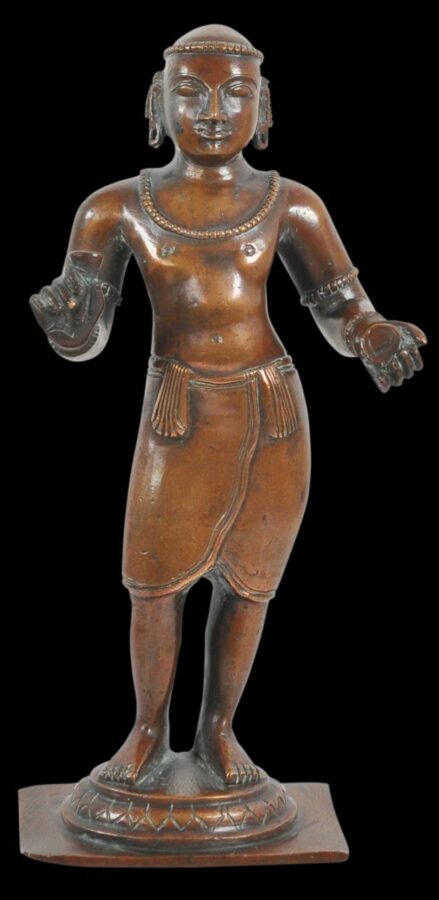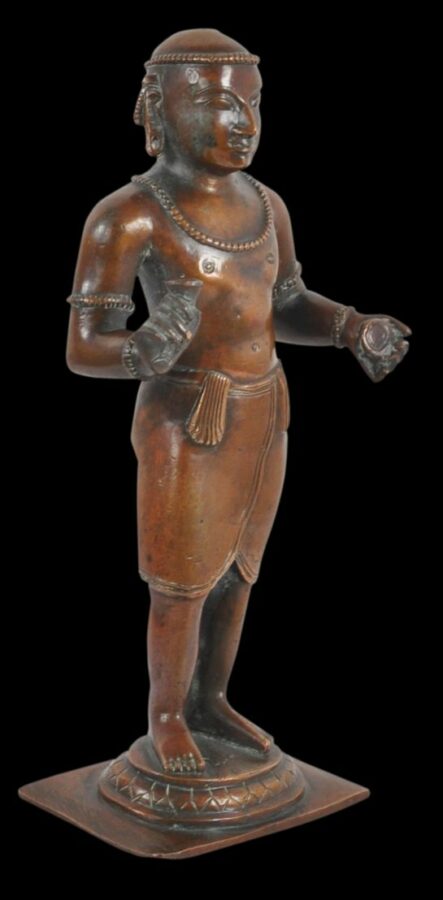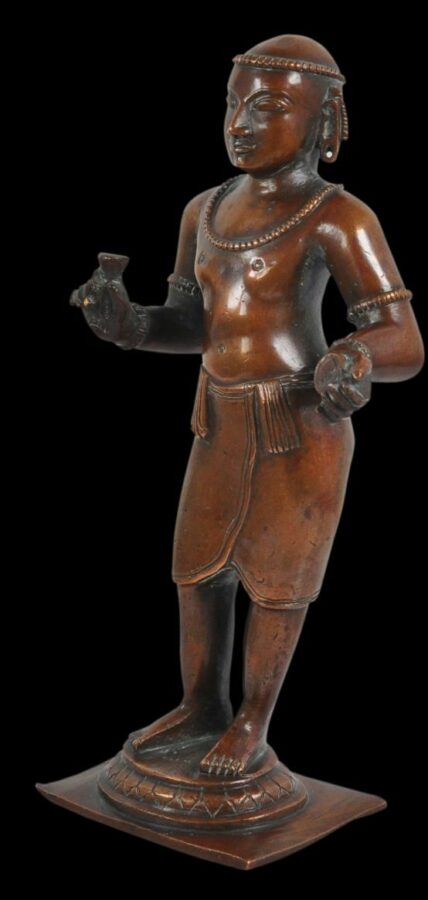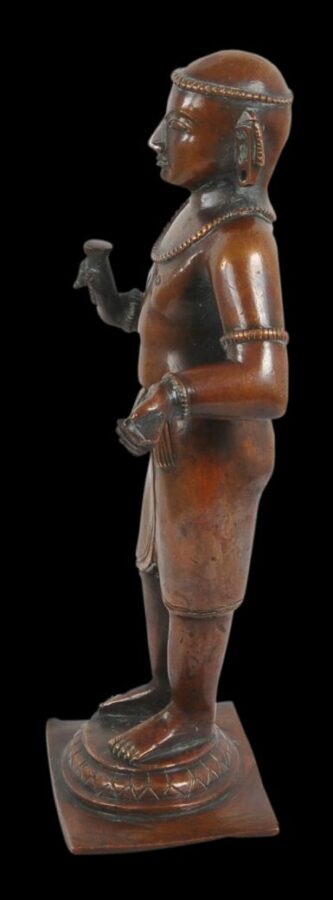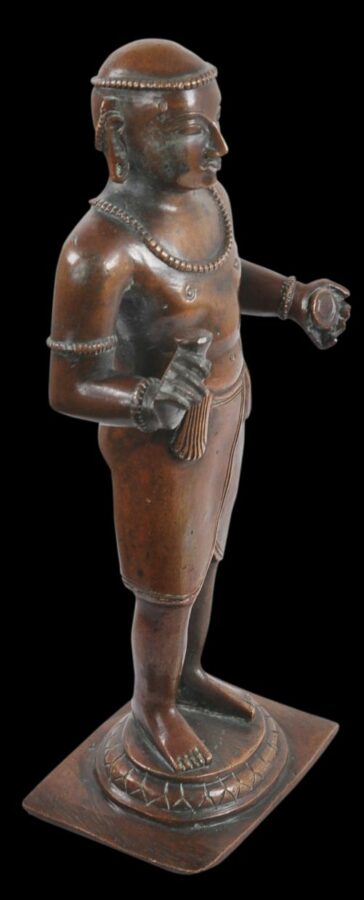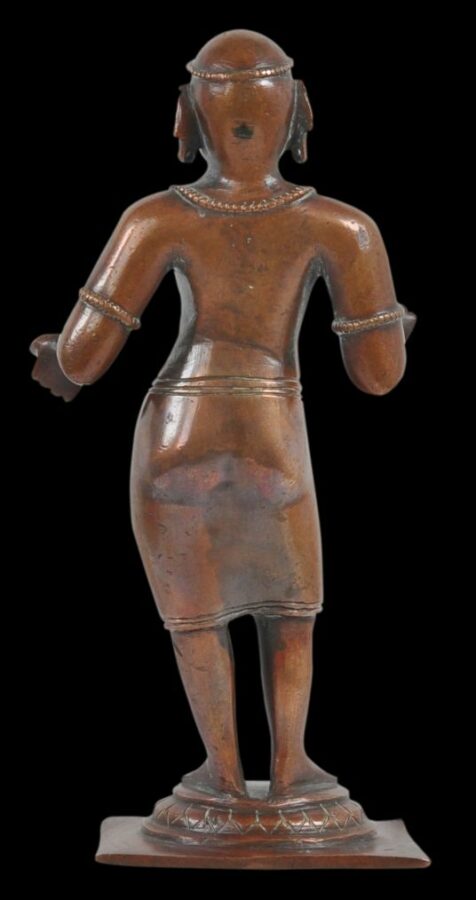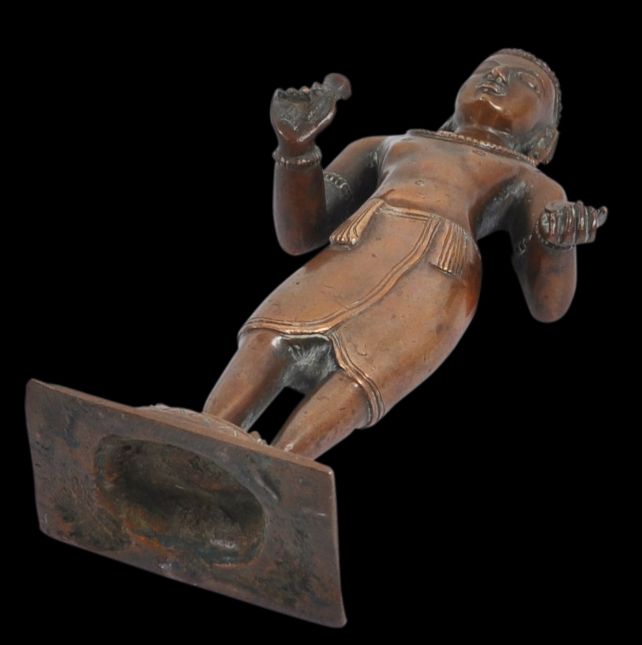South Indian sculptors created bronze depictions of important Hindu saints (nalvar) – men and women whose exemplary lives and compelling teachings inspired devotees – in addition to images of the usual gods and goddesses. The bronze here is one such example. It shows a saint, most probably the Shaiva Saint Sambandar. (The Tamils revere 63 separate saints.)
The saint is shown standing, on a low, oval dais, the sides of which are engraved with lotus petals. He stands with legs slightly apart. He wears a waist cloth, a necklace, upper arm bands, bracelets, ear ornaments and a row of beads around his shaved head. He has broad shoulders and muscular arms and legs.
Sambandar helped to popularise the Shaiva faith in the seventh century in South India. He spread his message with song and verse, which proved especially popular compared with the lengthy theological discourses used by others. Accordingly, he is often depicted with cymbals (as indeed he appears to be in this image) which he used to accompany his devotional songs. He is often shown in a dance or movement pose too, and again, in this bronze, he is depicted as if swinging his hips.
The figure is solid-cast and heavy for its size. Its features remain crisp, and yet the image has a fine, chocolate-brown patina. It is in excellent condition.
References
Pal, P., Art from the Indian Subcontinent: Asian Art at the Norton Simon Museum, Yale University Press, 2003.


